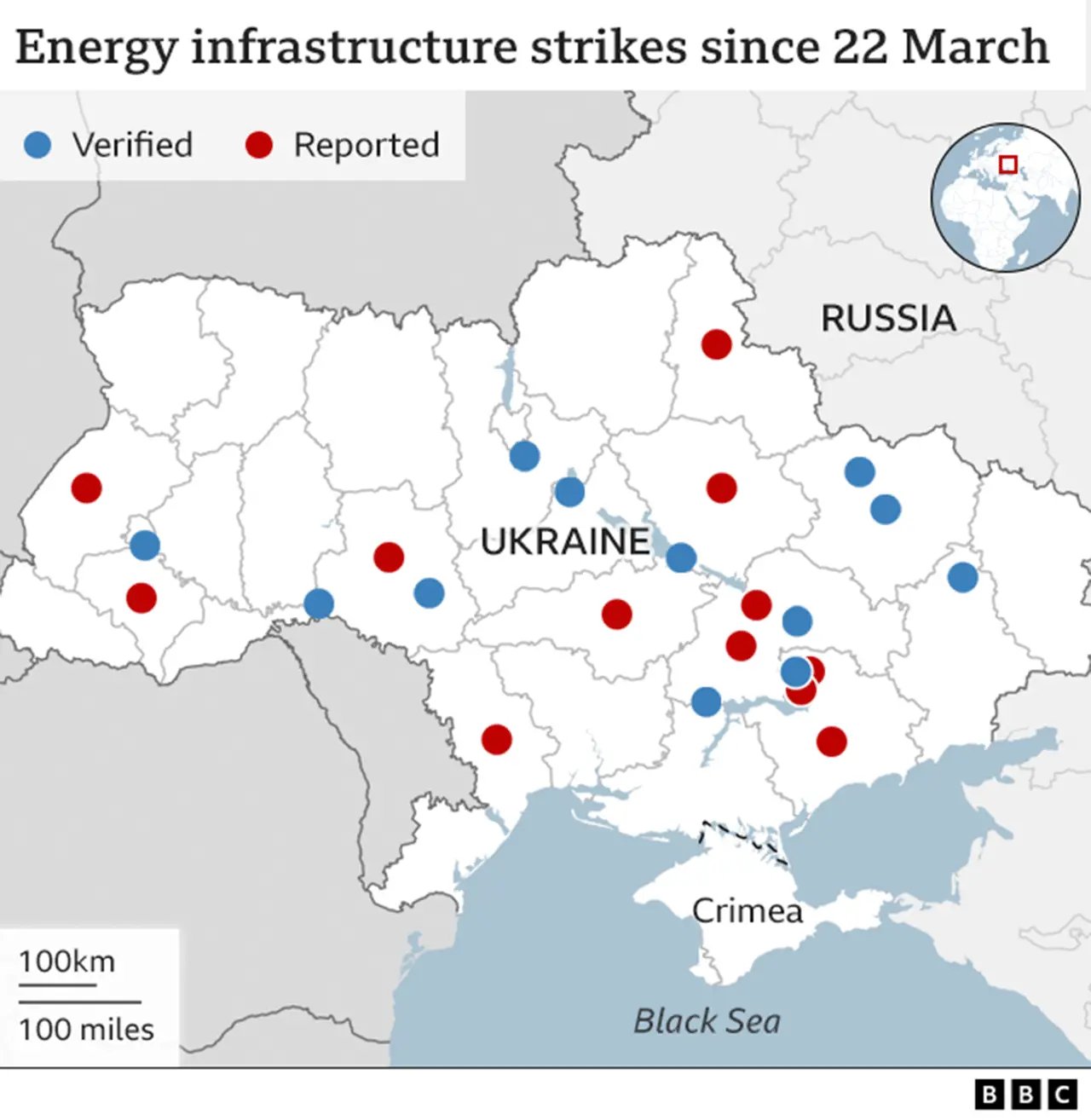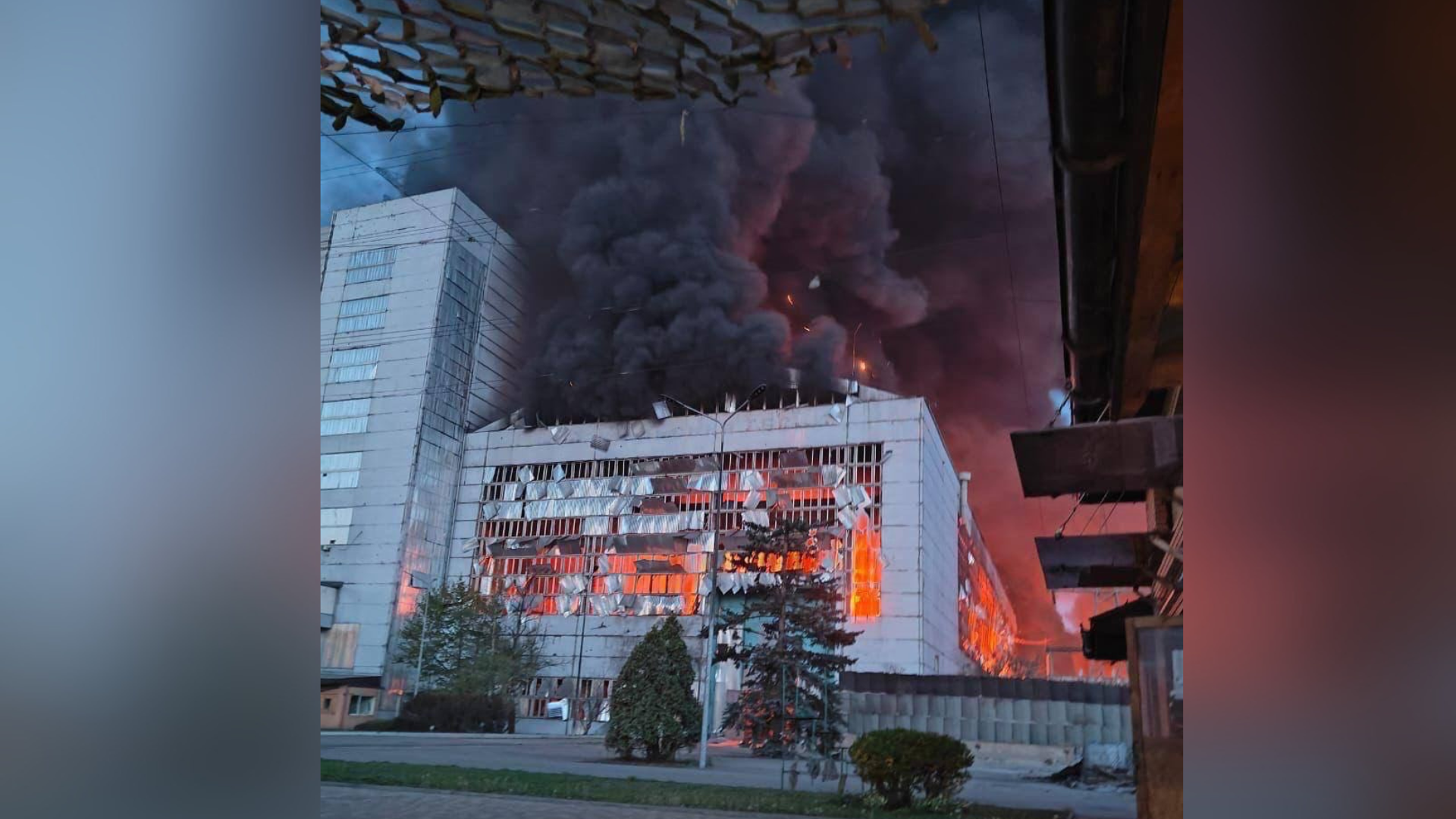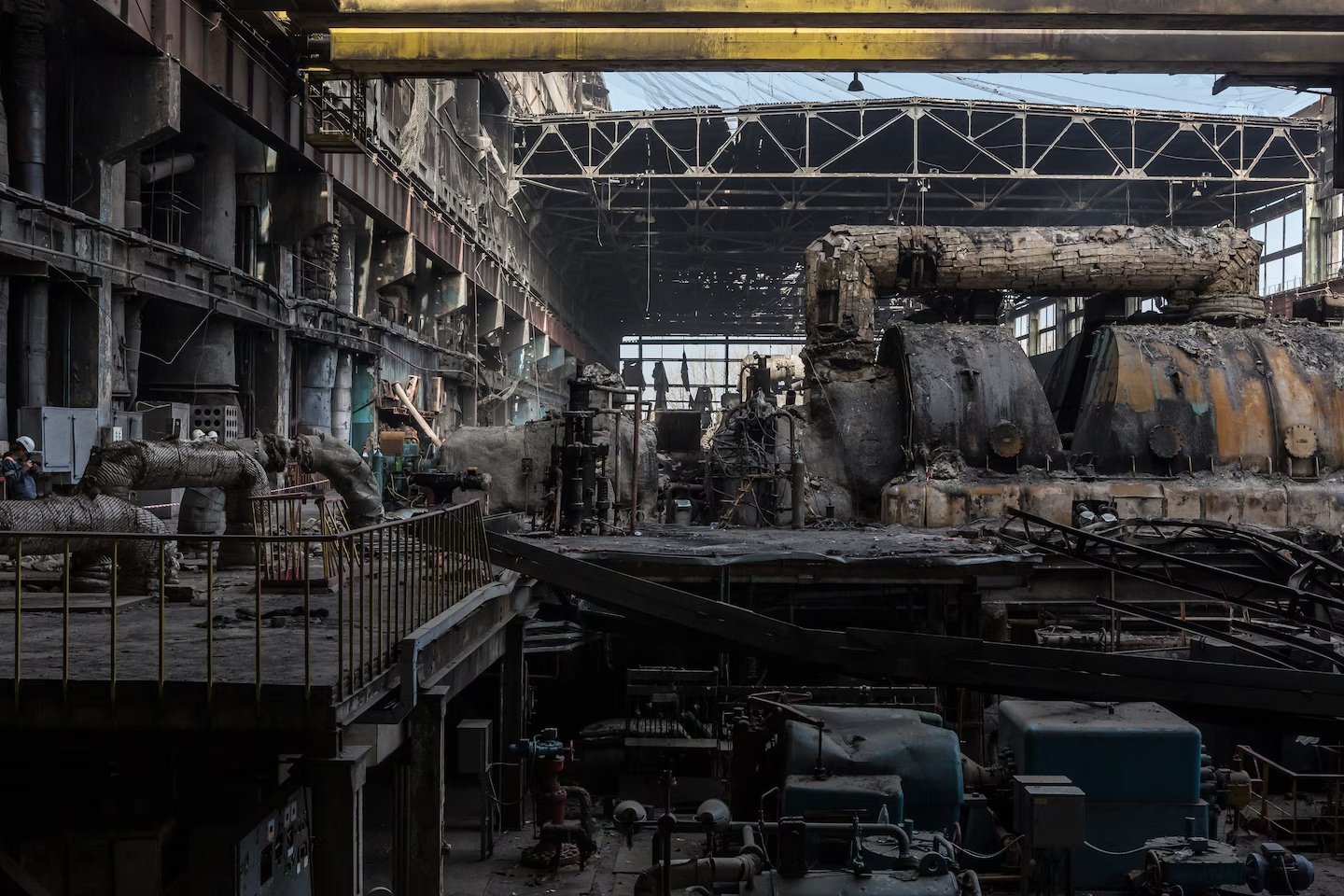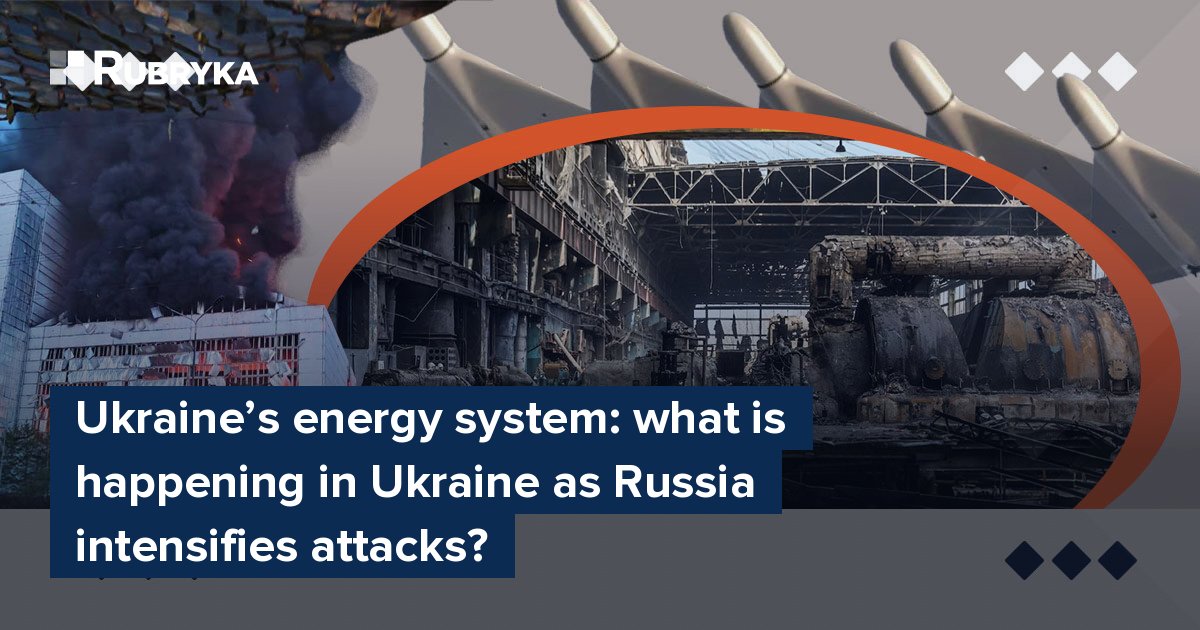
Since then, Ukrainians have adapted to new realities and strengthened Ukraine's energy system, importing electricity from their EU neighbors, producing more green energy, and restoring what was destroyed. The Ukrainian armed forces did their part to protect the sky from new strikes and push the Russian Black Sea Fleet, used for rocket attacks, farther to the east. The winter of 2023–2024 passed without rolling power outages as Ukraine received more Western air defense and equipment support.

The map of Russian strikes on Ukraine's energy facilities since March 22, 2024. Photo: BBC
Russia intensifies attacks
When Ukrainians felt some relief after a season of stable heating and power, Russia changed its tactics of attacking Ukraine's energy grid. While the Russian army concentrated its drone strikes in 2022–2023 on smaller substations and transformers scattered across Ukraine, this time, it switched to pounding larger energy facilities in specific regions with precision ballistic missiles. Since March 22, 2024, Russia has launched five massive attacks targeting thermal and hydroelectric power plants, leading to power restrictions, first for industrial enterprises and then for civilians.

Russian rockets destroyed the Trypilska Thermal Power Plant on April 11, 2024. Photo: Zmina
"The same number of missiles used in the [2022–2023] winter attack are now being directed at five to six energy facilities in one region," Maria Tsaturian, head of communications at Ukrenergo, Ukraine's national energy operator, stated. She added that Russia is trying to leave large industrial regions and cities without power. For instance, the critical energy infrastructure of the major city of Kharkiv was almost obliterated by the recent Russian strikes, according to its mayor, and the April 11 strike fully destroyed the Kyiv region's largest thermal plant.
Ukraine's energy system now
The Ekonomichna Pravda reports that Ukraine has lost almost 40% of its electricity generation. Russians stopped 100% of the production of Ukraine's state-owned energy company, Centrenergo, and destroyed or significantly damaged more than 80% of the facilities of the Ukrainian private company DTEK. Ukrenergo's hydroelectric plants and infrastructure are under continued attacks.
According to Oleksandr Kharchenko, director of the Energy Industry Research Center (EIRC), the state of thermal energy generation is grievous. He believes Ukraine is left with only basic generation, i.e., nuclear power and solar and wind power plants, with part of consumption covered thanks to imports and emergency assistance.
Ukrainian officials told the Financial Times that the damage from Russian strikes this year was worse than in the winter of 2022-2023, "with the apparent aim now being permanent, irreparable damage." They argue that Russia targets large power plants in specific regions to eradicate them because it is impossible to rebuild power stations quickly and prepare for the following winter. Protecting large power facilities from rockets is more complicated because they cannot be shielded like smaller substations, which companies like Ukrenergo covered with anti-drone nets and sandbags.

A view of the damaged DTEK power plant after Russia's April strikes. Photo: Oksana Parafeniuk/ The Washington Post
What now?
Since the first Russian attacks on Ukraine's energy grid, resilient Ukrainian electricity workers and engineers have been diligent in repairing the damaged substations, sometimes working 24/7 to restore power at phenomenal speed and the risk of their lives. According to Oleksandr Kharchenko, EIRC director, Ukraine has repaired high-voltage substations more than ten times, overhauling some at least three or four times after Russian strikes.
The situation is much more problematic with large power plants: Ukraine doesn't have enough resources to revive them at the same pace as smaller facilities. It also doesn't have enough air defense, like Patriot systems and missiles, to defend them. As Russia intensifies attacks with expensive new-generation rockets, repairing huge energy facilities, like thermal plants, is too "money-down-the-drain" costly.
Losing critical power stations means blackouts for millions of Ukrainians. With the support of partners who are ready to donate older energy equipment, Ukraine is working on solutions to mitigate the impact of massive Russian attacks on its citizens. The country limits energy use, increases electricity imports, and invests in wind and solar power. Ukrainians are also considering building a more scattered energy grid with smaller power plants and developing distributed generation based on natural gas. However, closing the sky with more air defense is paramount.

A Russian drone — Iranian-made Shahed-136 — over Kyiv on October 17, 2022. Photo: Roman Petushkov/Reuters
Newsletter
Digest of the most interesting news: just about the main thing





